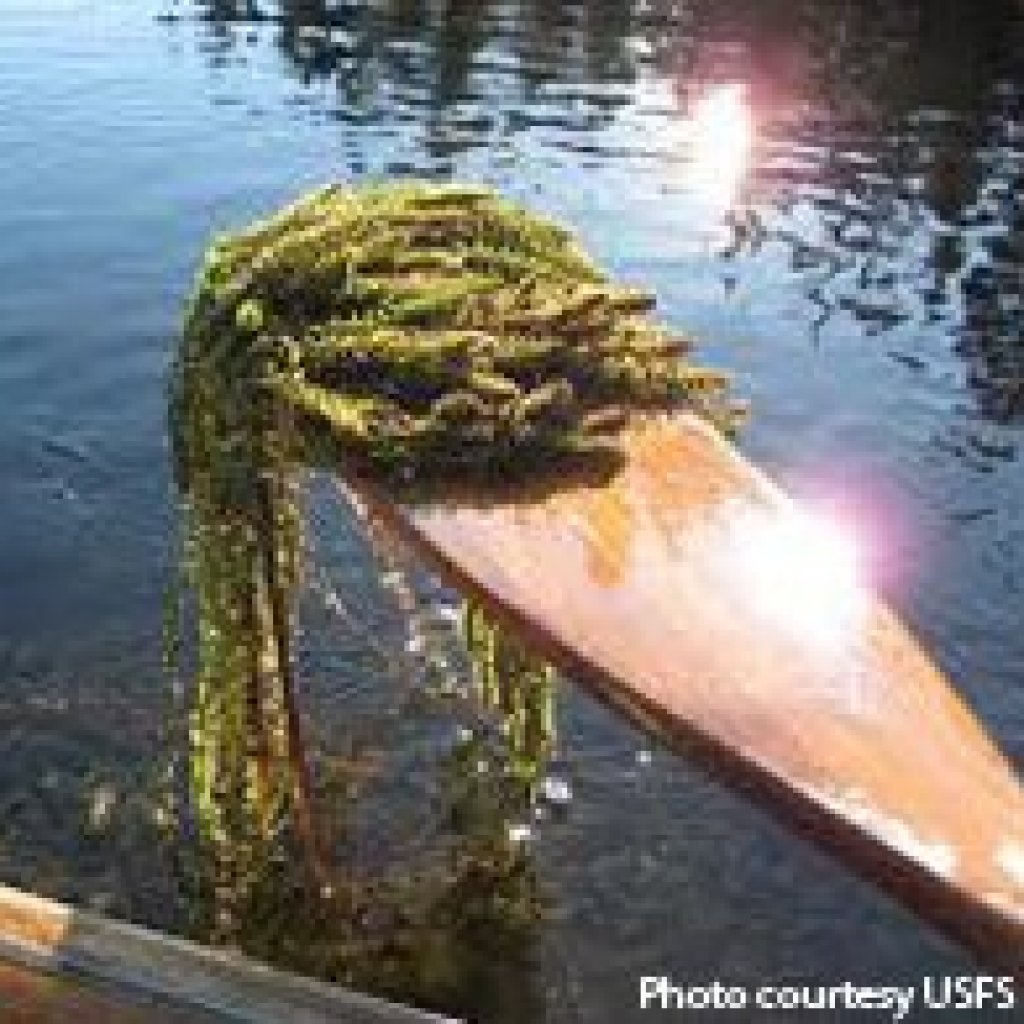


What are aquatic invasive species?
They are non-native plants, animals, and other organisms that have evolved to live primarily in water (aquatic habitats) rather than on land (terrestrial habitats). Aquatic habitats are habitats that are covered with water all or part of every year. From oceans to bogs, many types of aquatic habitats exist. (Source – USDA National Invasive Species Information Center)
Aquatic invasive plants include algae, floating plants, submersed plants, and emergent plants. Aquatic invasive animals include insects, fish, reptiles, mollusks, crustaceans, and amphibians. Other aquatic invasive organisms include pathogens (disease-causing organisms), such as molds, fungi, bacteria, and viruses. (Source – extension: Aquatic (Water-Dwelling) Invasive Species)
In the Copper River Watershed:
- We currently have the aquatic invasive plant, elodea on the Copper River Delta.
- Concerns for the region that haven’t been located here yet, include aquatic invasive mussels: zebra and quagga.
WHAT’S THE CONCERN?
Elodea is a concern to Alaska because of its potential to replace native plant species, alter aquatic habitat, impede recreation, and even reduce property values. Elodea can spread easily and re-establish from just a fragment of a plant. Given the high amount of float plane traffic and recreational boating in Alaska, there are plenty of opportunities for Elodea to spread to new locations unless properly managed.
WHERE IS IT LOCATED IN ALASKA?
Elodea was first discovered in Alaska in Cordova’s Eyak Lake in 1982, and was thought to have been introduced from an aquarium dump. The original infestation was found in an isolated location near Mavis Island, but Elodea has since spread throughout Eyak Lake and into several water bodies on the Copper River Delta. Elodea has also been found in several other places throughout Alaska.

CLEAN, DRAIN, DRY

To prevent the spread of elodea it’s important to follow clean, drain, dry procedures. Clean off all visible plant materials, mud, and fish/animals from equipment. Drain all the water from equipment before moving it. Dry the equipment for several days before entering new waters.
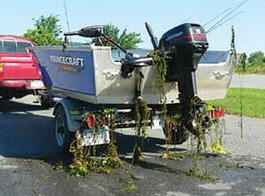 Report any Elodea that you find on the Copper River Delta and do your part to prevent its spread! Inspect and clean float planes, boats, other watercraft, and trailers if you have been in infested waters.
Report any Elodea that you find on the Copper River Delta and do your part to prevent its spread! Inspect and clean float planes, boats, other watercraft, and trailers if you have been in infested waters.
Elodea Resources
On March 3rd & 4th, 2015, the Copper River Watershed Project hosted a successful two day meeting and workshop in Cordova that gathered together local and statewide stakeholders to discuss Elodea management in the watershed. On September 9, 2015, we held a second public meeting to discuss Elodea surveys conducted by the U.S. Forest Service during summer 2015 on the Copper River Delta, and an herbicide treatment trial being considered in Wrong Way Pond in 2016. Take a look at the presentations given during each event!
VIDEO of the evening meeting on March 3, 2015 taken by the Prince William Sound Science Center is available on our YouTube channel: Elodea Meeting Video.
March 2015:
Successful Management & Eradication of Nuisance Aquatic Plants: Lars Anderson
Elodea surveys on the Chugach National Forest: Kate Mohatt
Elodea in the Copper River Watershed: Heather Stewart
Elodea on the Kenai Peninsula and what we’re doing about it: John Morton
Ecological Role of Elodea in Lakes and Ponds on the Copper River Delta, Alaska: Gordie Reeves
Invasive species management & the human dimension: Tobias Schwoerer
Sonar Aquatic Herbicide: Andrew Skibo
September 2015:
Elodea in the Copper River Basin: Heather Stewart
Distribution and Ecology of Elodea on the Copper River Delta: Kate Mohatt
Aquatic Weeds and Vectors of Introduction: Mark Sytsma
Sonar Aquatic Herbicide: Andrew Skibo
For more information and to learn about what is being done to manage Elodea in other parts of Alaska, explore the links below:
http://dnr.alaska.gov/ag/ag_Elodea.htm
http://plants.alaska.gov/invasives/elodea.htm
http://www.fairbanksweeds.org/elodea-working-group.php
http://www.kenaiweeds.org/programs.php
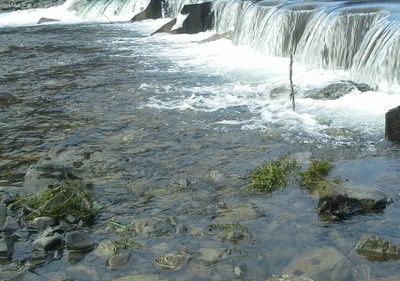
Elodea clings to rocks after being washed over the weir between Eyak Lake and Eyak River in January 2015. Photo: Danielle Verna, CRWP
INVASIVE SPECIES ALERT!
March 2021
 The Alaska Department of Fish and Game (ADF&G) has recently learned that the highly invasive aquatic species, zebra mussels (Dreissena polymorpha), were shipped to Alaska attached to marimo moss balls. Live moss balls are often sold at pet or aquarium supply stores as decorations in fish tanks. If you have recently purchased moss balls please inspect them and your aquarium for any signs of zebra mussel presence. If zebra mussels are found, please do not dispose of aquarium contents by pouring down the drain or flushing – this can cause serious issues with home plumbing and can release the invasive species into the environment.
The Alaska Department of Fish and Game (ADF&G) has recently learned that the highly invasive aquatic species, zebra mussels (Dreissena polymorpha), were shipped to Alaska attached to marimo moss balls. Live moss balls are often sold at pet or aquarium supply stores as decorations in fish tanks. If you have recently purchased moss balls please inspect them and your aquarium for any signs of zebra mussel presence. If zebra mussels are found, please do not dispose of aquarium contents by pouring down the drain or flushing – this can cause serious issues with home plumbing and can release the invasive species into the environment.
Never dump aquarium contents into the wild or into a storm drain. Prevent the spread of aquatic invasive species!
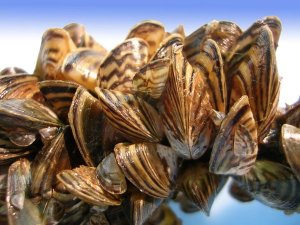 WHY IS THIS A CONCERN?
WHY IS THIS A CONCERN?
Zebra mussels are a freshwater shellfish about the size of a thumb. They can quickly colonize a freshwater ecosystem and once established it’s nearly impossible to eradicate. They can grow densely and encrust fish passage facilities and aquaculture operations as well as deplete plankton and disrupt native food webs.
PRESS RELEASE
Read the 3/4/21 press release from ADF&G and an article in the Cordova Times for helpful information on this new threat to Alaska.
For more information on how to identify zebra mussels, how to dispose of zebra mussels, and how to
report zebra mussels or other invasive species, please contact: Tammy Davis, ADF&G Invasive Species
Program coordinator: tammy.davis@alaska.gov or (907)465-6183.

